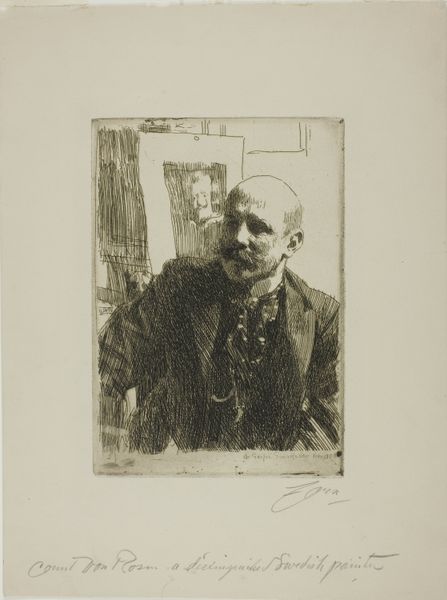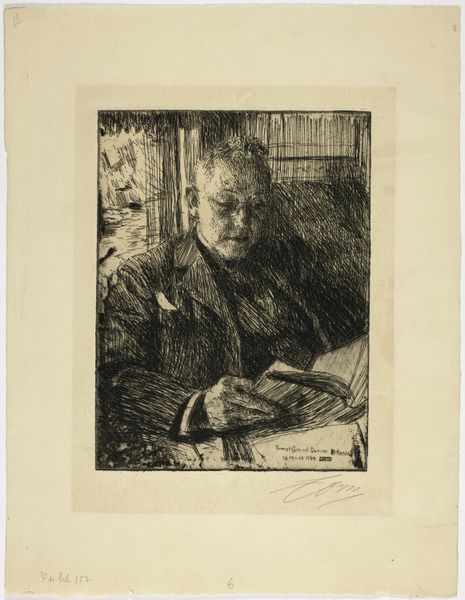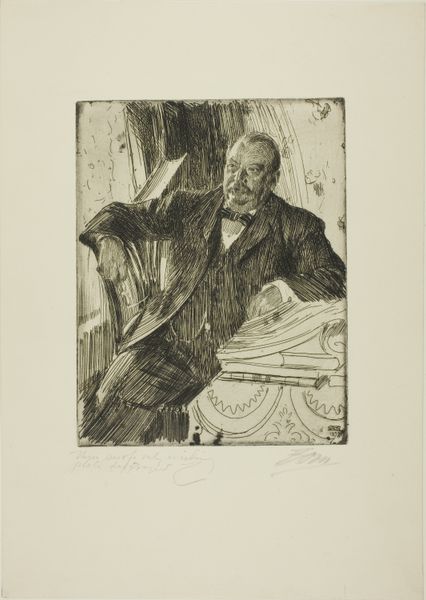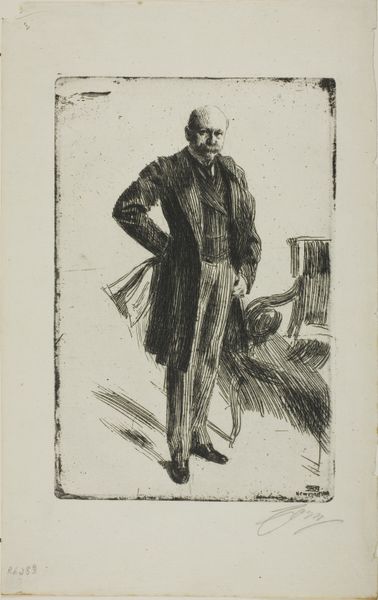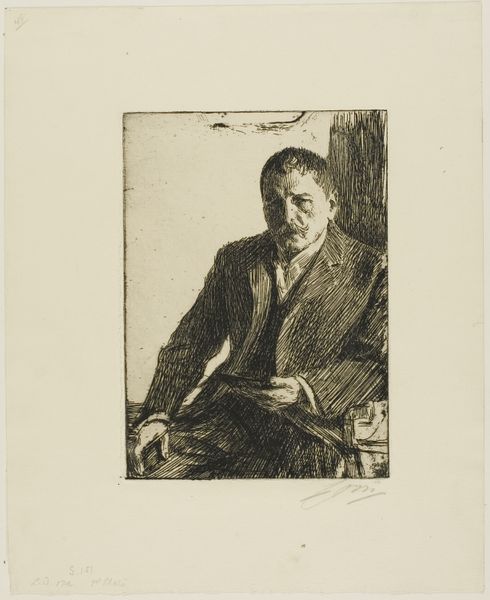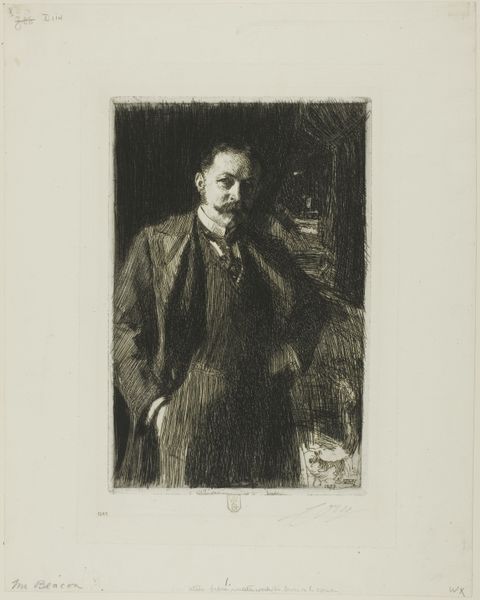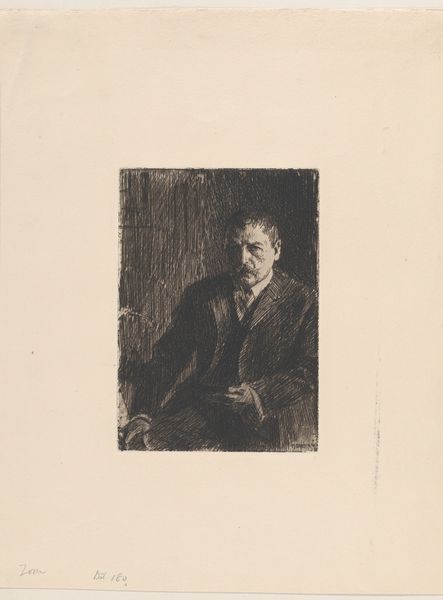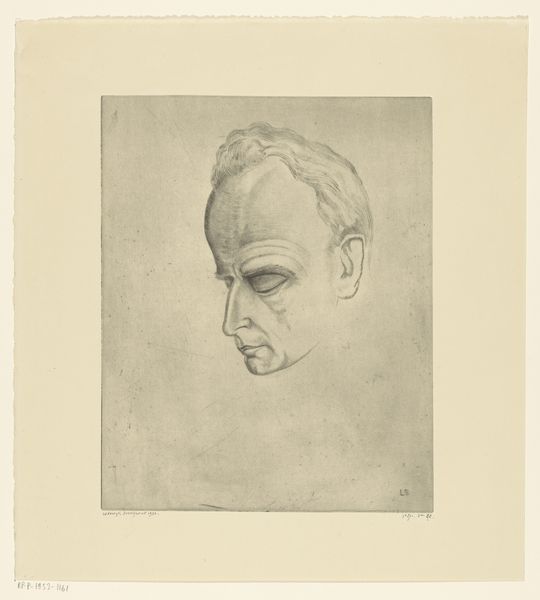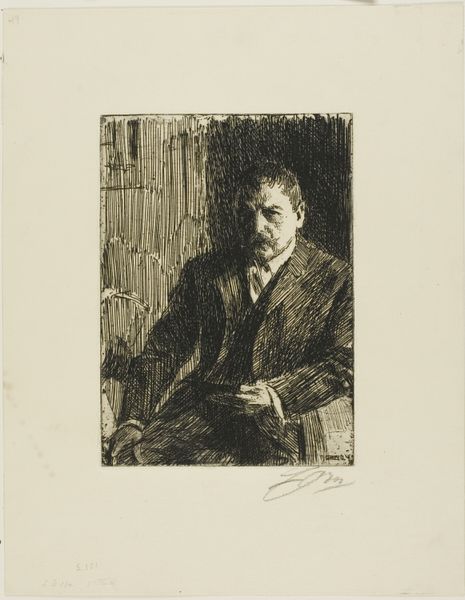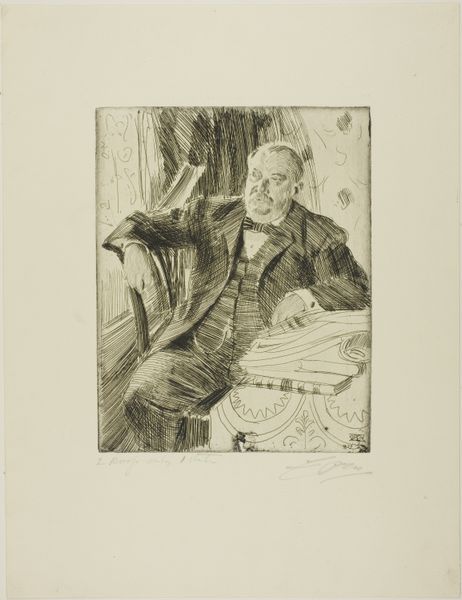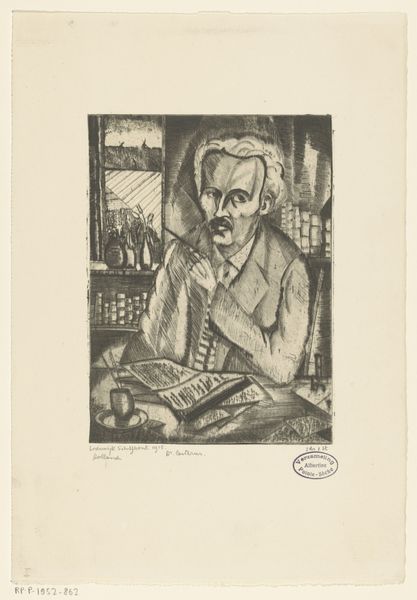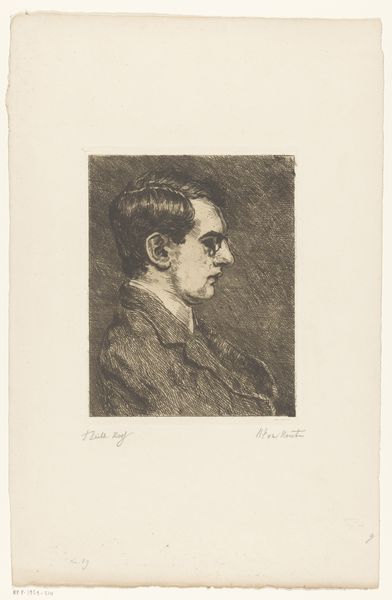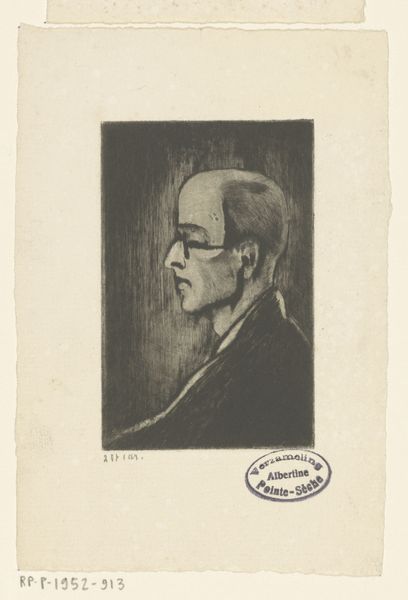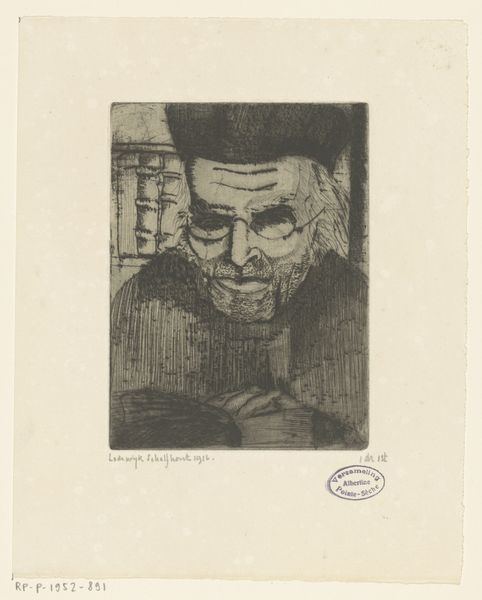
drawing, print, etching, paper
#
portrait
#
drawing
# print
#
etching
#
paper
#
realism
Dimensions: 198 × 150 mm (image/plate); 324 × 252 mm (sheet)
Copyright: Public Domain
Curator: Here at The Art Institute of Chicago, we have Anders Zorn’s etching titled "Alfred Beurdeley," created circa 1906-1907. Editor: It’s a striking image. Immediately, I notice the almost ghostly quality given the monochromatic etching against the light paper; there's an undeniable sense of contemplation or even melancholy radiating from it. Curator: The sitter, Alfred Beurdeley, was indeed a prominent figure in the art world himself, a furniture designer and collector. Zorn, known for his society portraits, here presents Beurdeley in a very intimate setting, likely his own home, surrounded by the trappings of a cultivated life. Editor: Look at the books in the background! They speak volumes about Beurdeley’s intellectual and artistic pursuits. The way they're sketched suggests not just knowledge, but also an aura of personal history and memories connected to the printed word. It suggests a continuity of values being passed down to a refined taste. Curator: Absolutely. Zorn masterfully uses the etching technique to convey both detail and atmosphere. The lines are precise, yet they create a soft, almost blurred effect, drawing us closer to the subject. The portrait reveals much about artistic patronage and influence in early 20th century France. Editor: And the choice of rendering him in such detail, particularly his face, contrasts with the sketchiness of the background to truly guide our focus. It also suggests the social position; perhaps that one that dictates, for the public, the face of success versus the intimacy of private life. What do you think of the choice of medium for the artist’s sitter? Curator: That’s perceptive! Etching was a medium that allowed for wide distribution. Zorn likely envisioned this as a piece to circulate amongst a select, educated audience. By memorializing a figure like Beurdeley, he was solidifying his legacy and also making a statement about the cultural values he admired and shared with a prominent figure like Beurdeley. Editor: So true. The print becomes an artifact reflecting both Zorn’s artistry and Beurdeley's status, an intersection between individual artistic expression and broader social narratives. I look differently at its historical placement in the museum now! Curator: And I appreciate how you see the embedded psychology here. Ultimately, Zorn created more than just a likeness; he composed a statement on identity, artistry, and the subtle interplay between public persona and private intellect. Editor: It really underscores how a seemingly simple portrait etching can reveal complex layers of meaning when we consider the lives and times of both the artist and the sitter! Thanks, I see how much more complex it all is now!
Comments
No comments
Be the first to comment and join the conversation on the ultimate creative platform.
